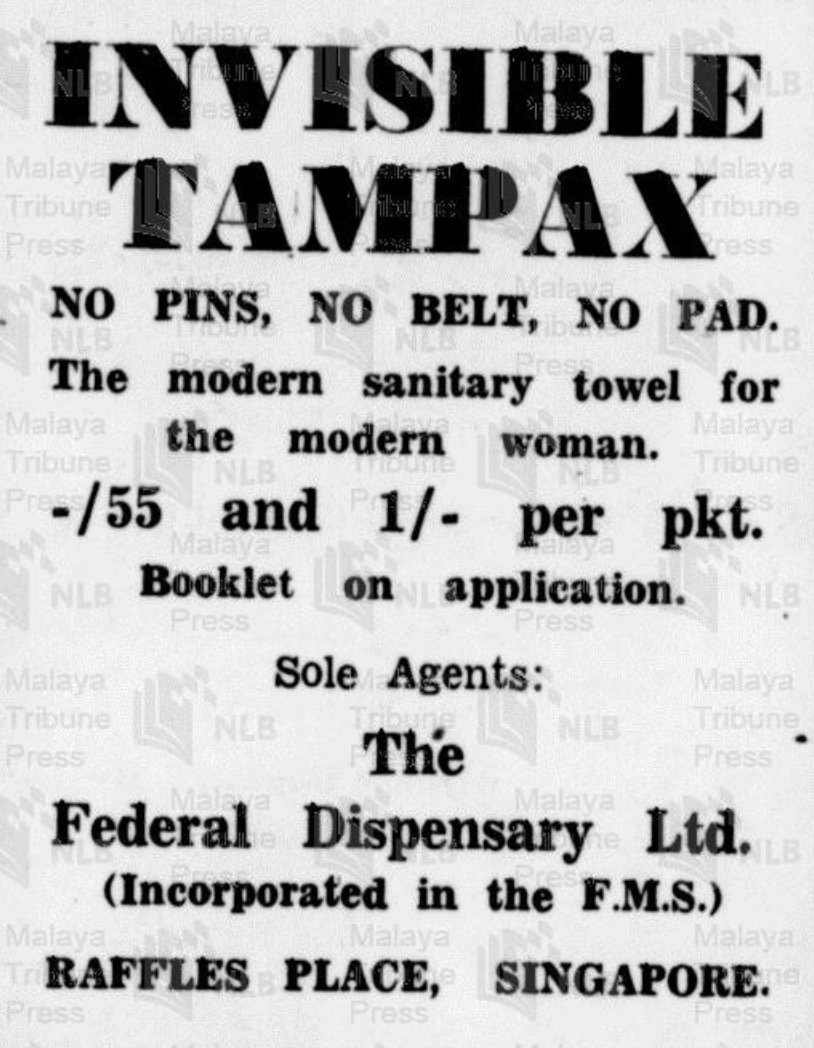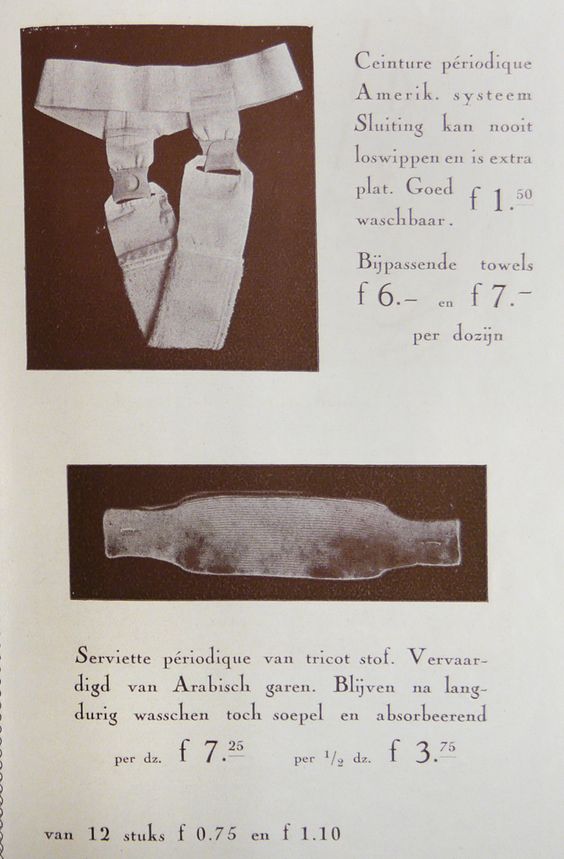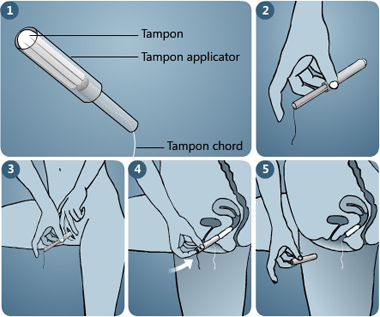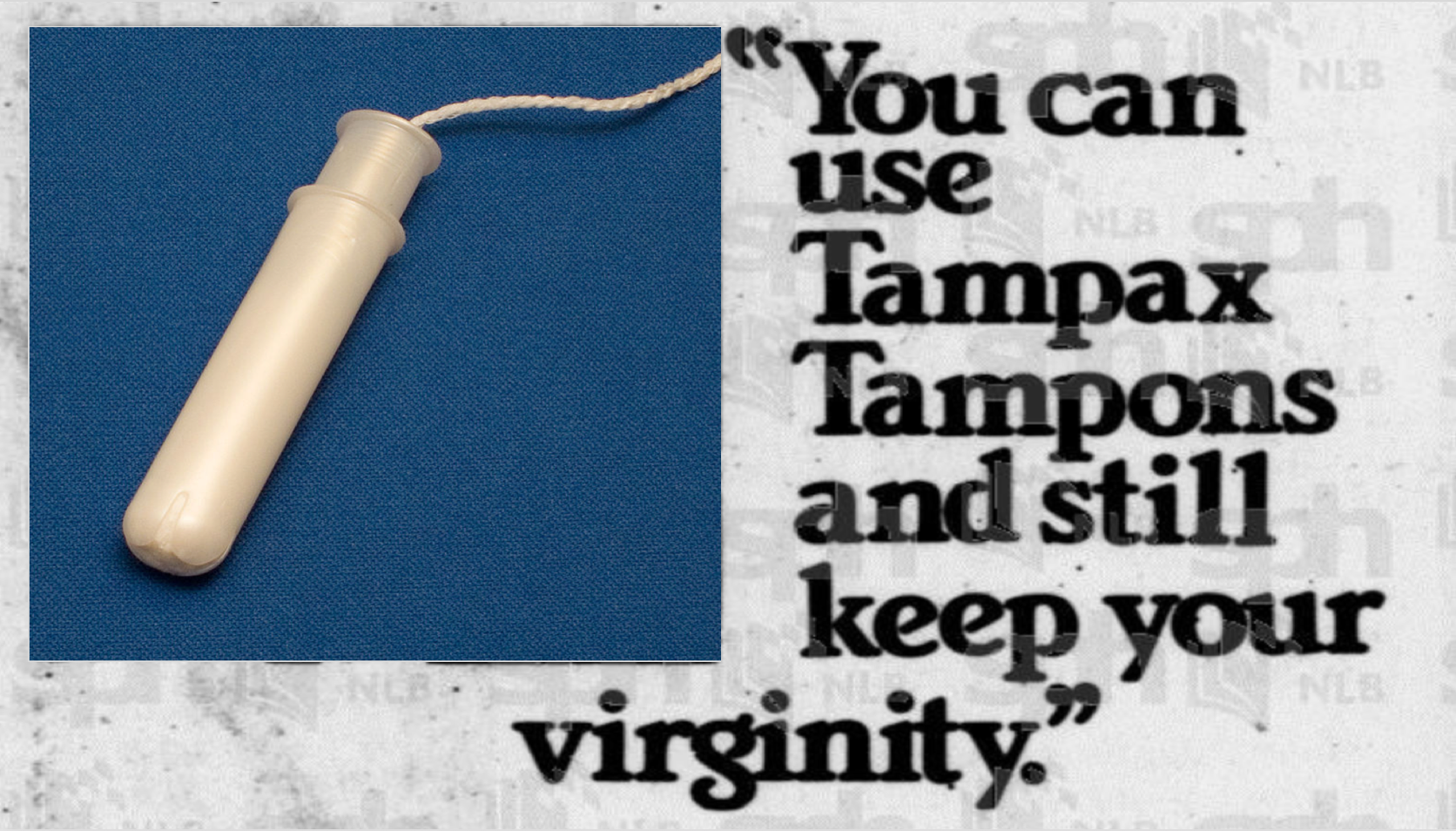Tampons might seem like quite a new thing, but the truth is they didn't arrive on our shores all that long after pads did.
While the first Singapore newspaper advertisements for pads that we found were dated 1929, we found our first tampon ad in a 1936 newspaper:
 Screenshot from Newspaper SG
Screenshot from Newspaper SG
They honestly sounded way better
"No pins, no belt, no pad" — indeed, those were big selling points compared to the tremendously-cumbersome pads of the 1930s, which looked something like this:
 Photo via Pinterest
Photo via Pinterest
Imagine wearing a belt just to keep your pad in place — ghastly. And that's what women in Singapore did, before adhesive pads entered the mainstream in the 1980s!
And so indeed, for those of you who do use tampons, you would know how effective and convenient they are compared to pads.
Their "invisibility", for instance — because when inserted accurately, a tampon cannot be felt:
 Ad from 1959. Screenshot from Newspaper SG
Ad from 1959. Screenshot from Newspaper SG
No uncomfortable belt lines under clothes, or indeed, chafes or abrasions.
And in these ads from the late 1960s and 70s, the focus was a key thing you could do with tampons but not with pads:
 Screenshot from Newspaper SG
Screenshot from Newspaper SG
... and you know what, this still holds true today, even though there are now alternatives to tampons that will also work, like the menstrual cup:
 Screenshot from Newspaper SG
Screenshot from Newspaper SG
It's a wonder, therefore, that these didn't quite take off in all-along and still-conservative Singapore, where sanitary pads continue to dominate the feminine hygiene market.
y tho
With all the advantages tampons have, Singaporean women nonetheless stayed away — and if you asked around today, chances are only a minority of your friends and female relatives will have even tried tampons before, much less regularly use them.
We can think of a few reasons:
1. The traditional value of an intact hymen
Many Asian cultures place a high value on virginity — the traditional concept of this involves, typically, an intact hymen.
The hymen is an elastic membrane at the entrance of the vagina. Contrary to popular belief, the most common type is not a solid film, but rather, a ring with a hole in the middle so menstrual blood can leave the body.
(Click here for pictures of four different types of hymens that exist)
So here's the thing: it can be torn in so many other ways than just putting on a tampon — playing sports, doing splits, horse riding, to name just a few examples.
And no, tearing your hymen does not mean you have lost your virginity — that happens when you have sex for the first time.
Despite this, there are plenty of Singaporean women who do not use tampons because they believe the maintenance of one's virginity (as mistakenly represented by an intact hymen) is important.
[related_story]
2. How it's put on
The modern tampon was invented by an American Physician, Earl Haas. A crucial component to his invention was actually the disposable applicator because he did not want women to have to touch the cotton prior to insertion.
If you don't know how a tampon is put on, here's a nifty diagram:
 Diagram via Menstrupedia
Diagram via Menstrupedia
Tampons today may or may not have an applicator. Those without applicators come with a slightly steeper learning curve that involves sticking a finger in, like this:
 Diagram via Menstrupedia
Diagram via Menstrupedia
Not impossible, but not as easy, and perhaps not as comfortable initially.
Many Singaporean women haven't tried using tampons before because of the fear of sticking something up their vagina — somehow, that's a psychological barrier they find difficult to overcome, often stemming from general unfamiliarity with one's own lady parts.
And even if one has tried using a tampon before, a negative experience of not inserting it accurately may deter a woman from attempting to do so again.
Also, since most girls start out with pads, switching routines and having to learn something new tends to constitute a change to routines not everyone feels is necessary.
3. They were priced a bit higher than pads
According to the ad from 1936, a box of tampons in Singapore would cost approximately $0.55 to $1. This is equivalent to between $7 and $15 today.
Pads on the other hand, are a cheaper alternative, costing anywhere between $0.35 to $0.65 (based on advertisements in a similar time period in the U.S., converted from USD). This is equivalent to between $5 and $9 today.
To put this into context, a box of tampons today would cost between $9 to $12 depending on the brand and quantity. A pack of pads can cost anywhere between $3 and $6.
The disparity in the prices of pads and tampons might serve as a slight additional factor discouraging the use of the more expensive option.
4. Fears of Toxic Shock Syndrome
In the 1980s, studies done by U.S. researchers found that tampon users were at greater risk of toxic shock syndrome (TSS), a potentially life-threatening condition caused by bacteria getting into the body and releasing harmful toxins.
The risk of tampon-related TSS is associated with the absorbency of the tampon: The higher the absorbency, the higher the risk.
However, it is not caused by tampons per se, and anyone can get TSS. In fact, according to Tampax, only about half of TSS cases are from women using tampons.
Because of this risk, many tampon companies make it a point to advise users to change their tampon regularly, at least every four to eight hours. Tampons with various absorbencies also exist now, so to be safe, you can stick with smaller sizes (which are typically light, regular, super and super plus).
So there you have it — tampons. If you haven't, you could consider trying them out — you might actually find them okay!
Top photo from Wikimedia and Newspaper SG.
If you like what you read, follow us on Facebook, Instagram, Twitter and Telegram to get the latest updates.
